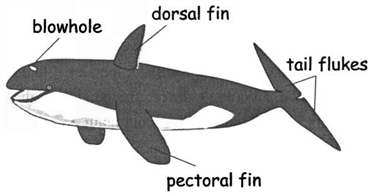
 阳光课堂同步练习系列答案
阳光课堂同步练习系列答案科目:高中英语 来源:山东省模拟题 题型:阅读理解
查看答案和解析>>
科目:高中英语 来源:模拟题 题型:完形填空
| 完形填空 | ||||
| When your kids were six or seven, you sent them to school. Did you ever wonder what goes through a teacher's 1 as he or she tries to teach your kids? Did you ever wonder what the teacher 2 from you, the parents? Parents can be 3 or suspicious. They can be of great help to the teacher 4 be in need of help themselves. Some teachers think parents are too 5 on their children. Here is 6 one teacher puts it. "I usually have the 7 of parents coming in and 8 me how much they care about the kids' education and how they really 9 their kids. They tell me they stand and 10 them closely when they do their homework. Sometimes the 11 offer help with the kids' lessons as if they were teachers. They check their school work, and are too sensitive to 12 . They blame the kids on everything having to do 13 school. When a parent asks me how his or her kid is getting on in my class, my answer usually is' Well, you know, he is 14 a good kid. He is fine in my class. Maybe you don't have to be so 15 with your kid.'" Teachers want parents to know that they are professionals at 16 with children. They have 17 many children and even parents. Because of this, teachers can be 18 at educating children. Teachers are 19 that parents want their children to do well, but they know more about what children should be able to do at different ages and 20 . | ||||
|
查看答案和解析>>
科目:高中英语 来源:0125 模拟题 题型:阅读理解
查看答案和解析>>
科目:高中英语 来源:同步题 题型:阅读理解
| 阅读理解。 | ||||||||||||||
|
Humpback whales
 Humpback whales are sometimes called performers of the ocean.This is because they can make impressive movements when they dive.The name “humpback”, which is the common name for this whale, refers to the typical curve shape the whale's back forms as it dives. Sometimes the humpback will dive with a fantastic movement known as a breach.During breaching the whale uses its powerful tail flukes to lift nearly twothirds of its body out of the water in a giant leap.A breach might also include a sideways twist with fins stretched out like wings, as the whale reaches the height of the breach. A humpback whale breathes air at the surface of the water through two blowholes which are located near the top of the head.It blows a double stream of water that can rise up to 4 metres above the water. The humpback has a small dorsal fin located towards the tail flukes about twothirds of the way down its back.Other distinguishing features include large pectoral fins, which may be up to a third of the body length, and unique black and white spots on the underside of the tail flukes.These markings are like finger prints: no two are the same. Humpback whales live in large groups.They communicate with each other through complex “songs”
| ||||||||||||||
| 1. According to Quick Facts, a humpback whale _____. A. cannot survive in waters near the shore B. d  oesn't live in the same waters all the time oesn't live in the same waters all the timeC. lives mainly on underwater plants D. prefers to work alone when hunting food 2. To make a breach, a humpback whale must _____. A. use its tail flukes to leap out of the water B. twist its body sideways to jump high C. blow two streams of water D. communicate with a group of humpbacks 3. From the passage we can learn that a humpback whale _____. A. has its unique markings on its tail flukes B. has black and white fingerprints C. gets its name from the way it hunts D. is a great performer due to its songs | ||||||||||||||
查看答案和解析>>
科目:高中英语 来源:贵州省月考题 题型:阅读理解
查看答案和解析>>
科目:高中英语 来源:福建省月考题 题型:阅读理解
查看答案和解析>>
科目:高中英语 来源:贵州省模拟题 题型:阅读理解
Children start out as natural scientists, eager to look into the world around them. Helping them enjoy
science can be easy; there's no need for a lot of scientific terms or expensive lab equipment. You only
have to share your children's curiosity. Firstly, listen to their questions. I once visited a classroom of
seven-year-olds to talk about science as a job. The children asked me "textbook questions" about
schooling, salary and whether I liked my job. When I finished answering, we sat facing one another in
silence. Finally I said, "Now that we've finished with your lists, do you have questions of your own about
science?"?
After a long pause, a boy raised his hand, "Have you ever seen a grasshopper (蚱蜢) eat? When I try eating leaves like that, I get a stomachache. Why?"?
This began a set of questions that lasted nearly two hours. ?
Secondly, give them time to think. Studies over the past 30 years have shown that, after asking a
question, adults typically wait only one second or less for an answer, no time for a child to think. When
adults increase their "wait time" to three seconds or more, children give more logical, complete and
creative answers.
Thirdly, watch your language. Once you have a child involved in a science discussion, don't jump in
with "That's right" or "Very good". These words wor k well when it comes to encouraging good behavior.
k well when it comes to encouraging good behavior.
But in talking about science, quick praise can signal that discussion is over. Instead, keep things going by saying, "That's interesting" or "I'd never thought of it that way before", or coming up with more
questions or ideas.?
Never push a child to "Think". It doesn't make sense, children are always thinking, without your
telling them to. What's more, this can turn a conversation into a performance. The child will try to find
the answer you want, in as few words as possible, so that he will be a smaller target for your
disagreement.?
Lastly, show; don't tell. Real-life impressions of nature are far more impressive than any lesson
children can learn from a book or a television program. Let children look at their fingertips through a
magnifying glass(放大镜), and they'll understand why you want them to wash before dinner. Rather than saying that water evaporates (蒸发), set a pot of water to boil and let them watch the water level drop.
1. According to the passage, children are natural scientists, and to raise their interest, the most
important thing for adults to do is _______.
A. to share the children's curiosity
B. to let them see the world around?
C. to explain difficult phrases about science
D. to supply the children with lab equipment?
2. In the last sentence of the first paragraph, the word "lists" could best be replaced by _______.
A. any questions
B. questions from textbooks?
C. any problems
D. any number of questions?
3. According to the passage, children can answer questions in a more logical, complete and creative
way if adults _______.
A. wait at least for three seconds after a question.
B. wait for one or two seconds after a question.?
C. tell them to answer the next day.
D. ask them to answer quickly.
4. The author mentions all of the following techniques for adults to share with their children's curiosity
except that adults should _______.
A. encourage their children to ask questions of their own?
B. offer their children chances to see things for themselves?
C. be patient enough when their children answer questions?
D. tell their children stories instead of reciting facts?
查看答案和解析>>
科目:高中英语 来源:模拟题 题型:阅读理解
| 阅读理解 | |
| 下面文章中有5处(第1~5题)需要添加小标题。请从以下选项(A、B、C、D、E和F)中 选出符合各段意思的小标题,并在答题纸上将相应选项的标号涂黑。选项中有一项是多余 选项。
The Marine Science Center offers nearly four hours of an educational adventure. Observing restoring Sea Turtles, lab experiments, taking our Exhibit Gallery challenge, and learning from educational beach activities are a unique and fun way to educate all ages about the fragile environment in Florida. 2. __________ We require a 1 to 10 ratio of guardians to students. All guardians within that ratio are free. The fee is $3 per student and $6 per any extra adults. The fee includes a three and a half hour program with interactive activities for the students. Payment should be made upon the arrival to the Marine Science Center. Please make checks payable to: County of Volusia Marine Science Center. 3. __________ This program can accommodate groups up to forty students. The students must be divided into groups of ten before arriving at the center. The students will be rotated(轮换) throughout all of the activities provided. 4. __________ The Marine Science Center is located at 100 Lighthouse Drive in Ponce Inlet. If arriving by bus, please stop the bus on the north (right) side of Lighthouse Drive directly across from the Marine Science Center entrance sign. Students will be accompanied up the main sidewalk to the front entrance of the Marine Science Center. If arriving by separate cars, please park in the main parking lot to the right on Lighthouse Drive. Take the boardwalk to the Marine Science Center. 5. __________ The bus must be available to take students to and from the Marine Science Center and Lighthouse Point Park during the field trip for beach activities. Upon arrival the driver will get specific instructions on your program schedule. |
查看答案和解析>>
湖北省互联网违法和不良信息举报平台 | 网上有害信息举报专区 | 电信诈骗举报专区 | 涉历史虚无主义有害信息举报专区 | 涉企侵权举报专区
违法和不良信息举报电话:027-86699610 举报邮箱:58377363@163.com